By John O’Ceallaigh
The debut of the Royal Mansour Casablanca just goes to show that opening as a sister property to one of the world’s best hotels isn’t easy. I’ll explain: owned by the country’s king and in operation since 2010, the Royal Mansour Marrakech is an unrivalled showpiece for exemplary traditional Moroccan craftsmanship. From its zellij tilework to its cabinetry, pretty much every intricate, exceptional piece you see was made by hand by top-of-their-game local artisans. At night, guests retreat to standalone three-storey riads that provide a rarefied take on the region’s famed dwellings. The resort itself is just a few minutes’ walk from the city’s medina, an arresting and always fascinating place to explore for the many Europeans who visit this city in search of excitement and a change from the ordinary.
I’ve been to Marrakech many times and appreciate the city, but other than a quick bolt-on trip to Essaouira a few years back it was all I really knew of Morocco. I’ve also visited Royal Mansour Marrakech a number of times and am a huge fan of the property, so when I first heard a sister property was opening in Casablanca I was excited. And then I was confused (and maybe slightly disappointed). Later I was educated. And now I’m enthusiastic. I’ll explain.

Long story short: don’t go to the Royal Mansour Casablanca hotel expecting to replicate the experience you’ll get at Royal Mansour Marrakech – at least initially. On first glance, they’re vastly different. The Marrakech outpost facilitates an immersion in the character of Morocco as so many foreign tourists perceive it, but what I hadn’t really considered previously is that it has been inspired by Marrakech and its surroundings. The Casablanca outpost is inspired by its setting in Morocco’s most commercial, prosperous, populated and international city. It’s a completely different proposition.
While the Royal Mansour Marrakech looks deep into Morocco’s past, Royal Mansour Casablanca’s origins and aesthetic are rooted in the 20th century. Constructed in the 1940s and opened in 1953, Casablanca’s first luxury hotel operated from the same site for decades, as a nine-storey, 215-key property. It closed in the 2010s to make way for this replacement, now a 24-storey, 149-key property that took eight years to bring into being.
While this towering hotel initially seems so different to its sibling, an awareness of Casablanca’s history shows it contextually conveys a similar sense of place to its home city. It’s just with Casablanca being still relatively unfamiliar to international tourists, it may take a bit of time before the first wave of customers become wise to it.
Here’s the context: Casablanca was under French control until 1956, and the city is also home to a significant portfolio of impressive art-deco buildings. And, of course, Casablanca’s name is derived from ‘white house’ – while Marrakech is famed for its cheery palette of dusty pinks, Casablanca is a whitewashed city. When I took the time to learn the basics, much more of what I encountered at this hotel made sense to me.
Its exterior finished in immaculate whites, the Royal Mansour Casablanca makes an immediately strong first impression. Its lobby is populated with immensely stylish pieces of mid-century-modern furniture by La Maison Hugues Chevalier, a French company, alongside handsome art-deco pieces such as old-school clock face-style elevator signage that shows the lifts’ movements from floor to floor through rotating hands. A vast wall-mounted abstract artwork and spiderweb-patterned carpet in fact show loosely interpreted aerial views of Casablanca itself, a sprawling metropolis now home to more than 5 million people. The lobby’s centrepiece is an aquarium that’s home to more than 1,000 fish from around the world, which seems to reference Casablanca’s coastal location and busy trading port (and also just looks very pretty).
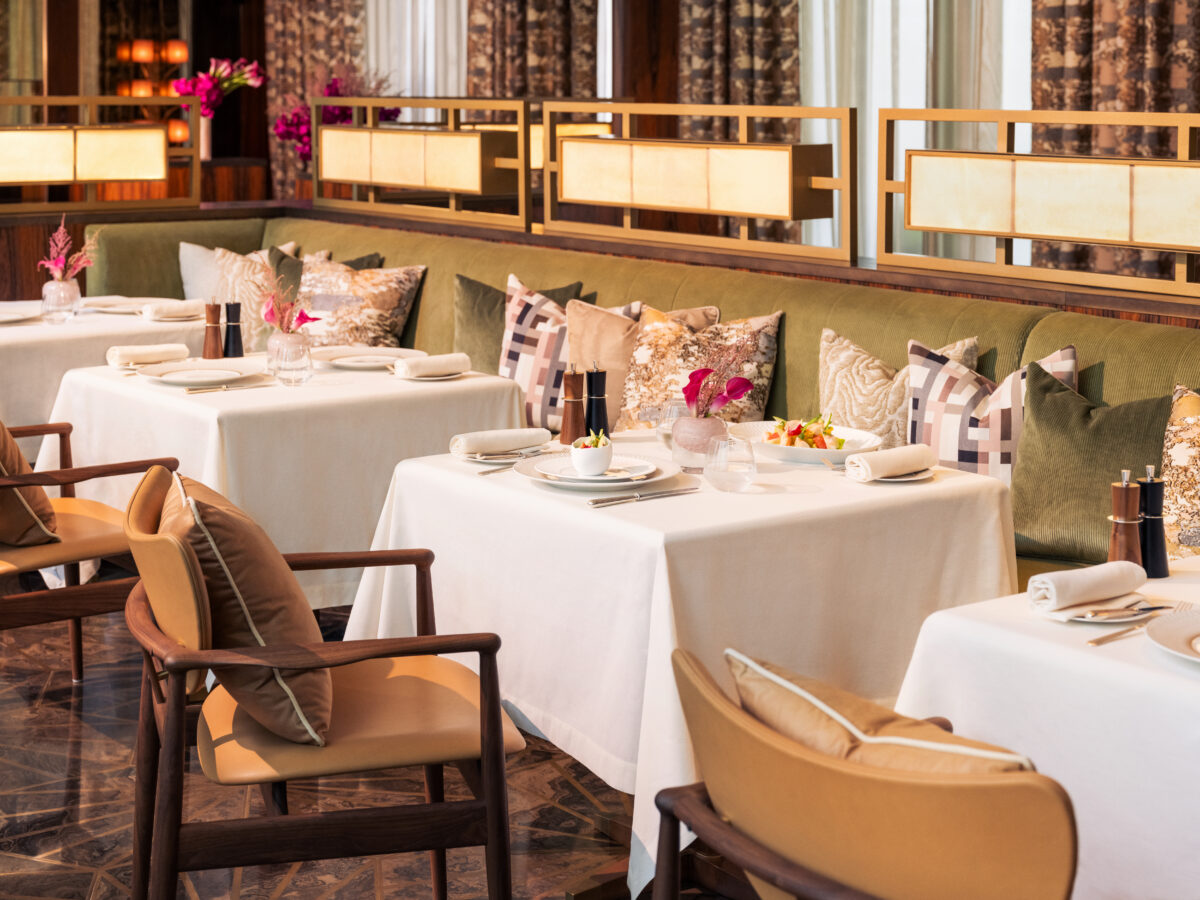
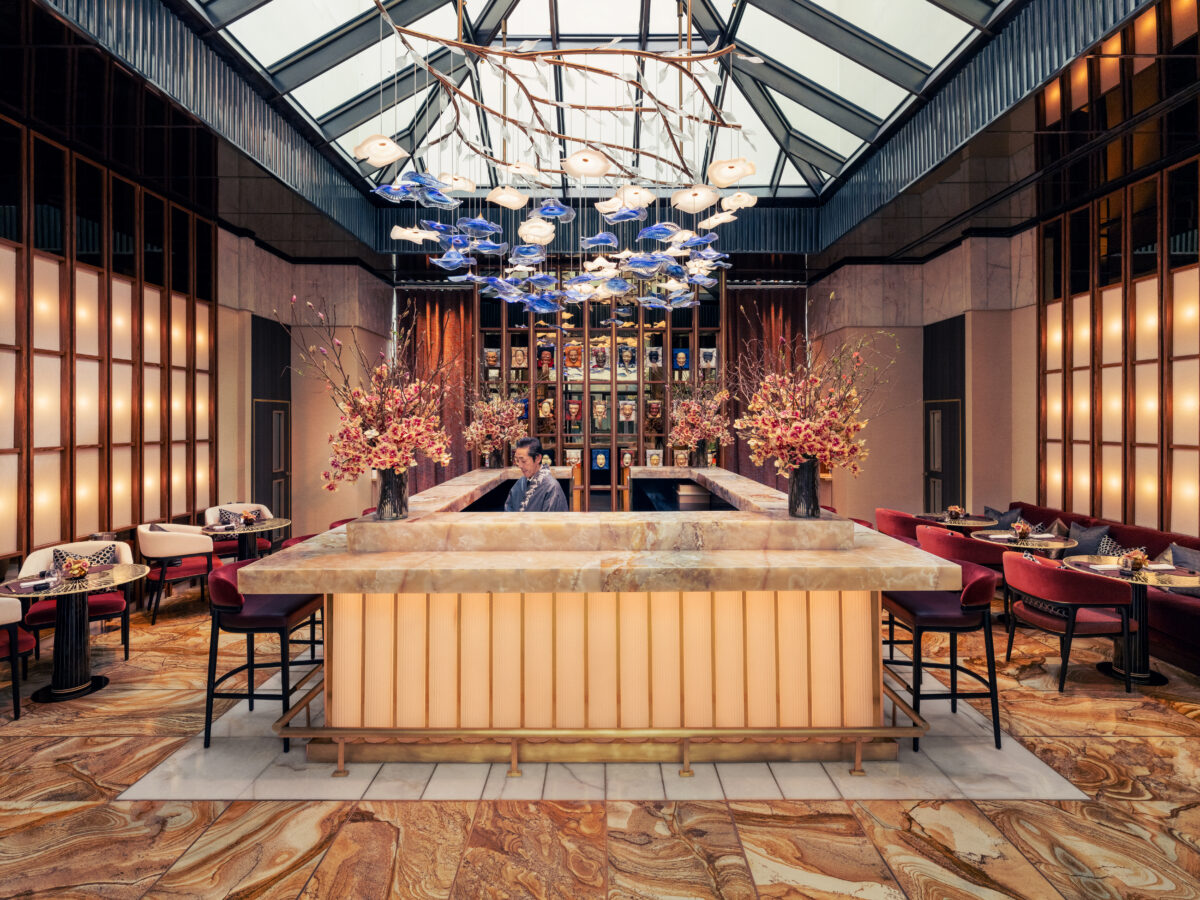
Though this feels very much like its own hotel, when I’d acclimatised to its distinctive aesthetic approach its analogies with the original Royal Mansour became much more obvious. It feels very expensive, in a good way. As in Marrakech, it’s clear its developers committed to creating a product of total quality. The finish on everything is immaculate, and so tasteful. It’s simply a really beautiful hotel. (For reference, the last time I can remember visiting a city hotel that showed what felt like comparable levels of money-no-object investment was when I attended the opening of the Rosewood Hong Kong, over five years ago.)
I was, generally, similarly impressed by the hotel’s amenities. There’s a sprawling spa, and while it occasionally felt like some of the staff were still finding their feet a few months after opening, it’s an inviting space with hammams, attractive relaxation rooms and a beauty salon. Still undergoing some finishing touches, a pool is forthcoming. Occupying a sizable chunk of the 20th floor, La Barbiere de Paris was immediately crowned Casablanca’s most exclusive (and expensive) barbers upon opening. The views from here are exceptional, and the service is similarly elevated. I enjoyed a meticulously executed haircut and beard trim that was preceded by an exacting consultation that informed me of my face shape (long and oval apparently), styles that would suit me, most flattering beard structure (who knew?), and more. The two-hour experience cost about US$85; I was impressed by the service and results.
Dining options are multifaceted. Breakfast, again of excellent quality, and an all-day menu are served at 23rd-floor Le Rooftop. Alongside it stands L’Table de Moroccan, which a friend in Marrakech told me has already won over discerning, wealthy locals who wouldn’t previously have considered eating Moroccan cuisine in hotel restaurants. I tried the superb Anfa Experience here, a $160 set menu that began with Moroccan blue lobster with lemon and cumin, alongside Tangier-style sea bream stuffed with olives and sweet lemon fennel. Window seats provide beautiful views of the coastline and city, generally low rise except for the incredible Hassan II Mosque (one of the world’s biggest) and its 210-metre-high minaret. Our dinner was complemented by a beautiful sunset, and an atmospheric and lovely performance by traditional musicians.
At ground level, there’s the self-explanatory The Sushi Bar, the hotel’s bar and cigar lounge, and Le Brasserie, with menus overseen by Eric Frechon. I’m normally turned off by hotel partnerships with ‘celebrity’ chefs, but this is a true coup. In Paris, Frechon oversaw proceedings at Le Bristol hotel’s three-star Epicure for about 25 years. Both of my meals at that venue were beyond exceptional, and this latest venture – overseen by a savvy, impressive Moroccan-born manager who spent 12 years working in fine-dining venues throughout France – has massive potential. My lunch in the restaurant’s courtyard, featuring a peppery sea bream carpaccio and butter-soaked sole, was wonderful.
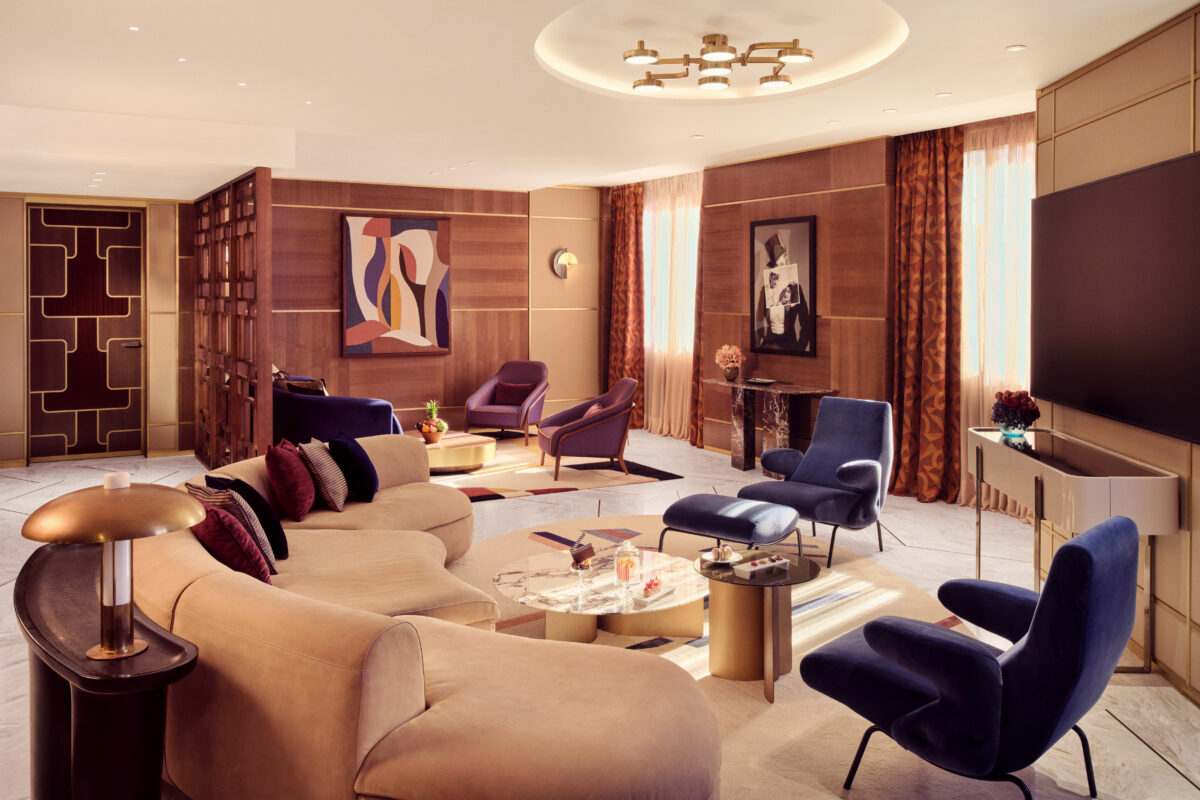
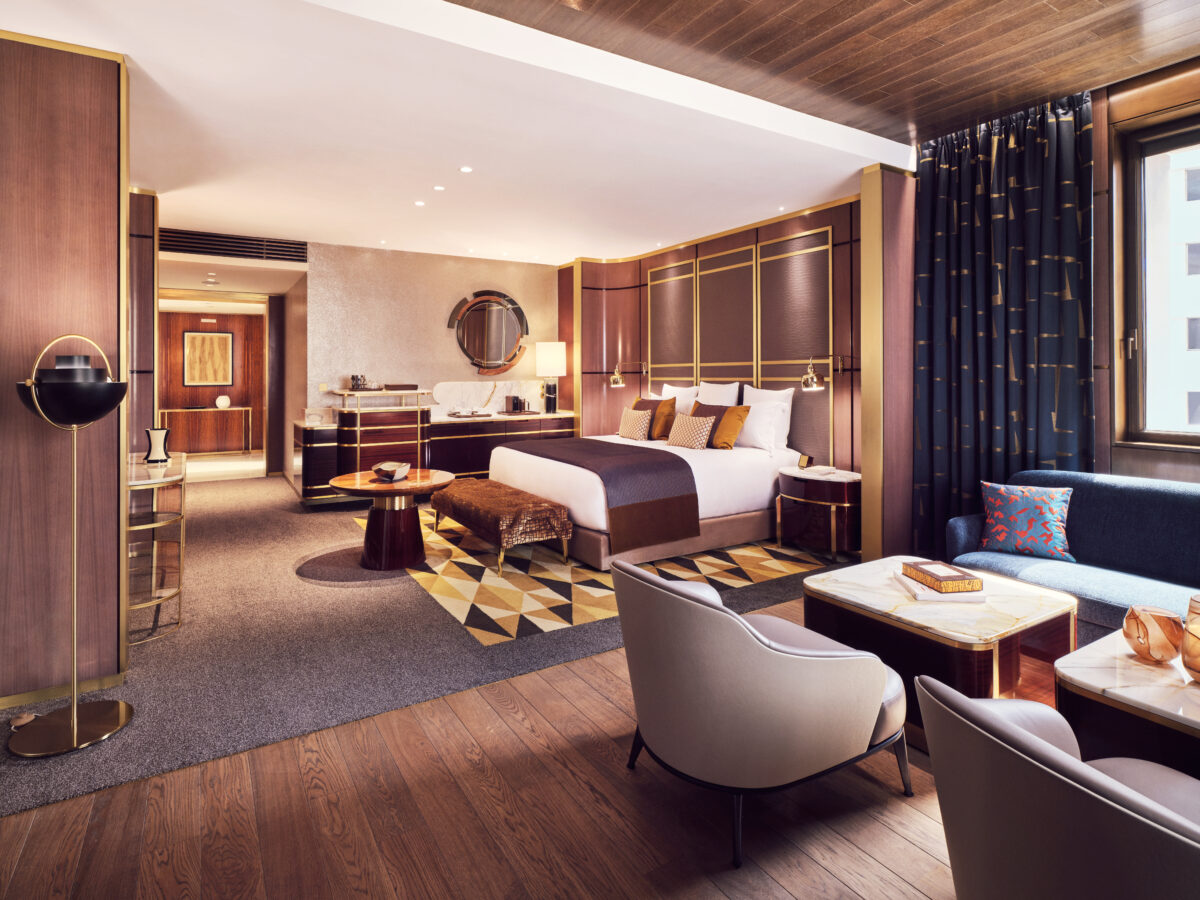
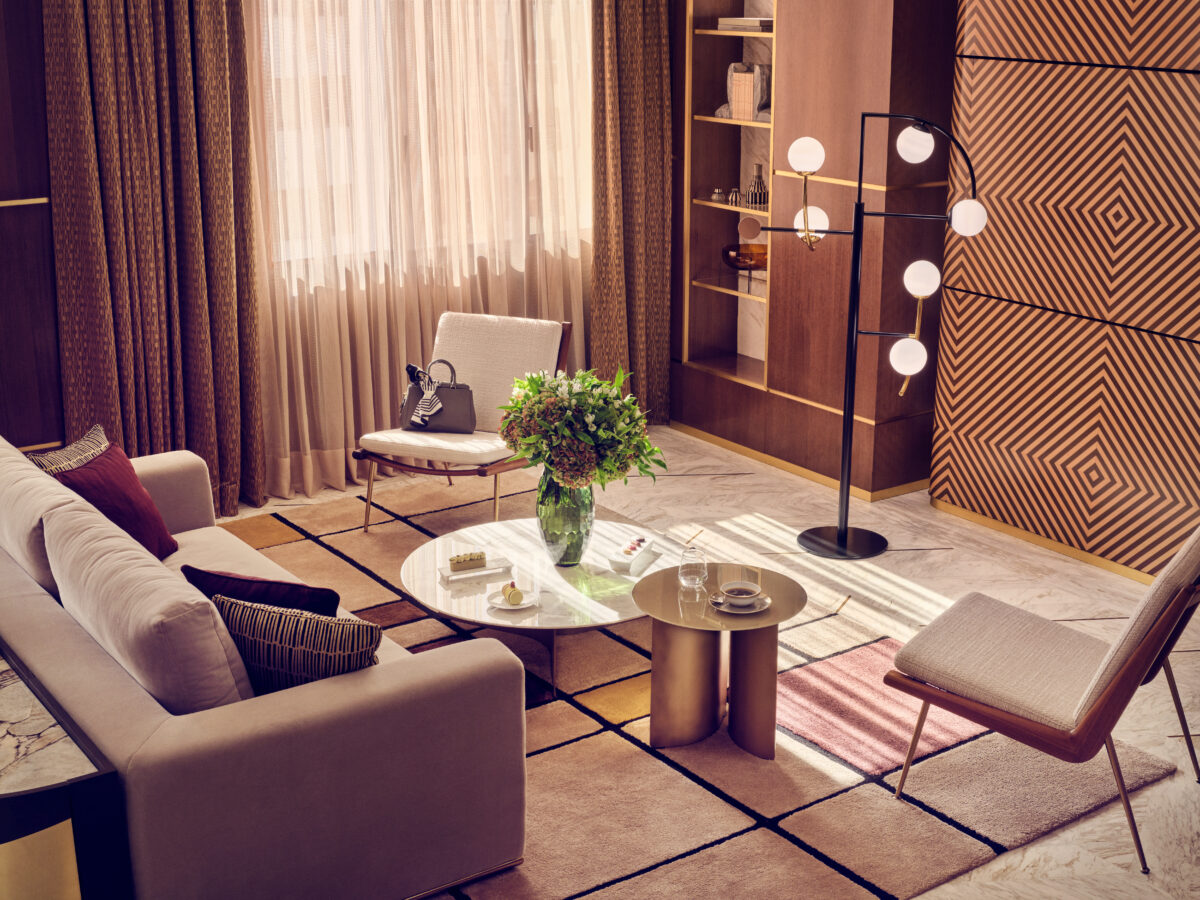
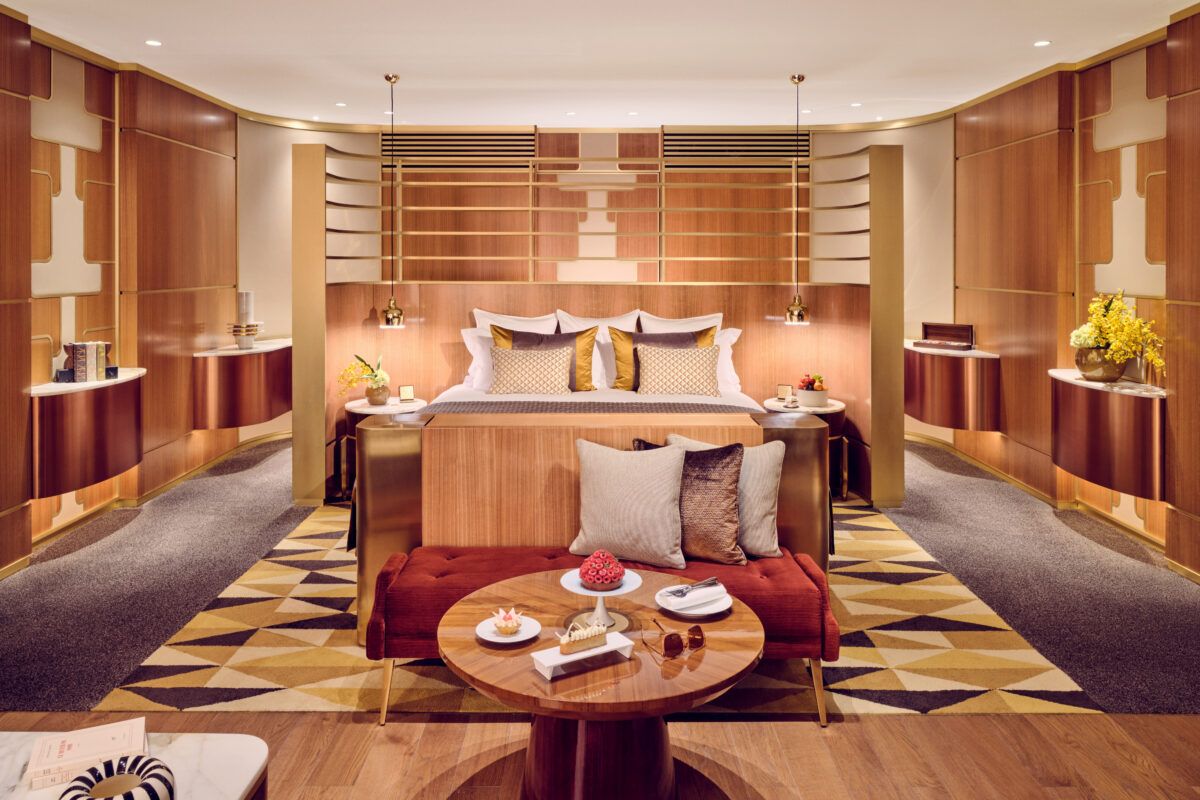
As for the accommodation, again it’s notable. Though I was confused by minibars which are opened by the click of a button from someone downstairs at reception, and while the 50ml single-use-plastic toiletries by local brand MarocMaroc don’t seem particularly sustainable, pretty much everything else felt well-conceived and impressive. (A quirk I liked: walk-in showers’ marble flooring is cut into diamond-shaped patterns that provide a memorably tactile experience underfoot that almost felt like a touch of reflexology.) I’d advise anyone planning a stay to request a room facing Hassan II Mosque, undoubtedly Casablanca’s most impressive landmark – it’s a notable step up over other rooms’ prospects over nearby tower blocks or the port.
Ultimately, by the time I’d come to understand the rationale behind Royal Mansour Casablanca’s distinctive approach and aesthetic it felt hard to leave the property. Compared to my experiences in Marrakech, levels of service occasionally needed more attention – not too surprising considering the hotel has just been open a couple of months (I typically find it takes a year for teams in newly opened hotels to get into a groove and for everything to run smoothly), and also because local employees will not have had the opportunity to previously work in such an ambitious property. There is nothing on offer at so high a level in the city, and, excitingly, there’s more to come from Royal Mansour. Though they’ve kept details quiet, a third property – a seaside resort in Tamuda Bay – is due to open later this summer.
Rates at Royal Mansour Casablanca start at MAD6000 (£435/$600), including breakfast.
If you’re looking to book a stay at Royal Mansour Casablanca or other luxury hotels in Morocco and beyond, LUTE can provide additional privileges and benefits to enhance your holiday (think free upgrades, complimentary dining credits, and more), at the best-available room rate. Email rooms@lute.co for more information or to make a booking.
LUTE is a luxury-travel consultant and content agency that works with hotel groups, tour operators, tourist boards, airlines and more. You can learn more about LUTE here. For frequent luxury-travel updates, follow LUTE and LUTE founder John O’Ceallaigh on Instagram.



